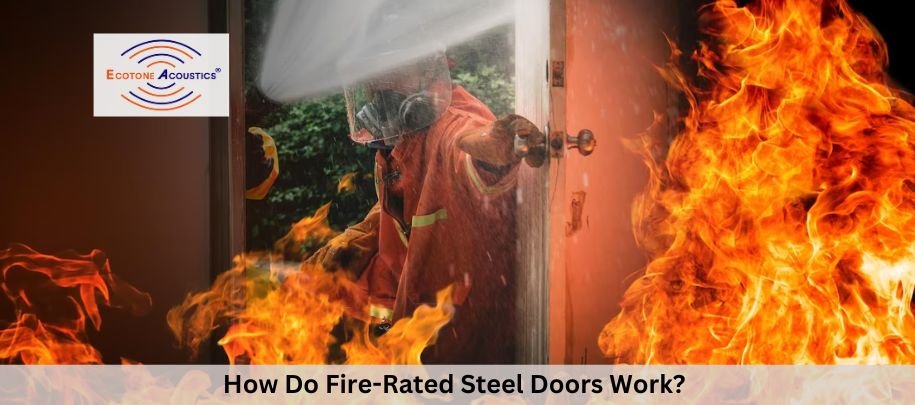How Do Fire-Rated Steel Doors Work?
Fire safety assumes utmost importance in various types of buildings, encompassing residential, commercial, and industrial structures. In the subsequent piece, we shall delve into the significance of fire safety within buildings, shedding light on the vital role fire-rated steel doors play in preventing and containing fires. By comprehending the definition, mechanism, installation, and regulations encompassing fire doors, we can acquire a more profound understanding of their paramount importance in safeguarding lives and property.
Fire-Rated Steel Doors Demystified
Fire-rated steel doors represent specialized doors meticulously designed to withstand fire and smoke, assuming the role of a barrier to impede the rapid propagation of flames throughout a building. As integral components of passive fire protection systems, they are strategically positioned to compartmentalize areas, allowing precious time for occupants to evacuate and emergency responders to intervene.
Constructed employing fire-resistant materials, fire doors are equipped with a plethora of components that amplify their efficacy in fire prevention.
Decoding the Mechanism of Fire Doors:
Comprehending the functionality of fire-rated steel doors necessitates a profound understanding of their key components and design principles. Engineered to resist fire and smoke, fire doors capitalize on intumescent strips and seals that expand under high temperatures, forming a tight seal to thwart the passage of flames and gases.
These doors undergo rigorous testing and certification processes, ensuring their reliability and compliance with safety standards. Fire door assemblies are evaluated based on their fire resistance rating, which denotes the duration they can withstand fire while preserving their integrity.
The Inner Workings of Fire-Rated Steel Doors
Fire doors operate through a meticulously defined process that activates in the event of a fire:
Detection of fire or smoke: Fire alarms, smoke detectors, or other fire detection systems initiate the alarm sequence.
Activation of the fire door closing mechanism: Upon detection, an automatic mechanism triggers the closure of the fire door, sealing off the affected area.
Sealing off the affected area: The fire door, equipped with intumescent strips and seals, closes tightly, creating an impregnable barrier against the spread of fire and smoke.
Halting the spread of fire and smoke: By confining the fire to its origin, fire doors impede the progression of flames and the release of toxic gases, granting occupants more time to evacuate safely.
Ensuring unhindered evacuation routes: Fire doors assume a pivotal role in preserving clear evacuation routes, enabling occupants to escape swiftly while enabling emergency responders to access the building.
The Significance of Proper Installation and Maintenance:
To optimize the effectiveness of fire-rated steel doors, the significance of proper installation and regular maintenance cannot be overstated. Professional installation guarantees the correct fitting of fire doors, accompanied by the necessary components, thereby minimizing the risk of failure during a fire emergency.
Regular inspections and maintenance procedures prove indispensable in identifying any potential issues or damage that could compromise the performance of fire doors. Addressing common problems such as damaged seals, misaligned hinges, or worn-out door closers promptly ensures the integrity of fire doors remains intact.
Fire-Rated Steel Doors Regulations and Compliance
Building codes and regulations offer guidelines pertaining to the installation, maintenance, and inspection of fire doors. Building owners and managers bear the responsibility of complying with these regulations to ensure the safety of occupants and avoid penalties.
Non-compliance with fire door regulations carries severe consequences, including legal liabilities, escalated insurance premiums, and risks to human life and property.
Conclusion
Fire doors assume a pivotal role in the realm of fire safety, providing crucial protection against the swift dissemination of fire and smoke within buildings. Their construction, mechanism, installation, and maintenance represent essential factors contributing to their effectiveness. By adhering to fire door regulations and conducting regular inspections, building owners can safeguard lives and property, thus ensuring a safer environment for all occupants.
Remember, fire safety constitutes a shared responsibility, and every endeavor to prioritize it serves as an investment in protecting lives. To delve deeper into the significance of fire doors and for getting the best fire doors visit Ecotone Acoustics. Contact us today!







